Kateryna Gornostai discusses making her ensemble coming-of-age film, Stop-Zemlia, where everything for the characters is happening for the first time.
Read all of our Berlinale coverage here.
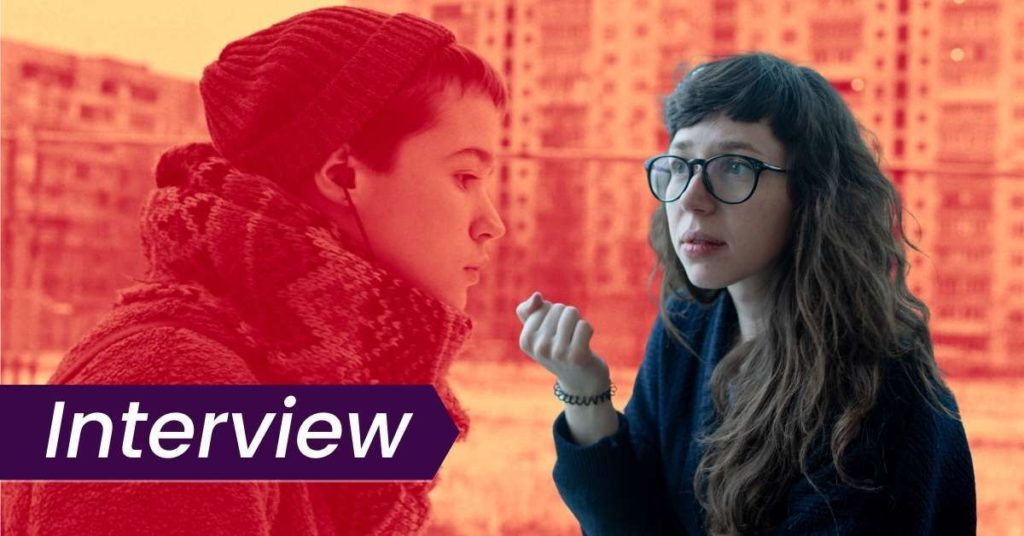
Discover one film you didn’t know you needed:
Not in the zeitgeist. Not pushed by streamers.
But still easy to find — and worth sitting with.
And a guide to help you do just that.
Set in Ukraine, Kateryna Gornostai’s Stop-Zemlia is an ensemble coming-of-age story in which a whole class of graduating high school students deal with heartbreak, friendships, mental health issues, and family troubles. At the centre of the story is Masha (Maria Fedorchenko), a smart, privileged girl with absent parents, and her two best friends. Masha has an unrequited crush on Sasha (Oleksandr Ivanov), which Gornostai uses as an excuse to follow his story, including his troubles with his alcoholic mother.
Throughout, Gornostai paints a portrait of friendships both close and casual, and strong feelings that the students are often too scared to act on. It’s often messy because of its wide scope, but that’s also part of Stop-Zemlia’s appeal: the interconnectedness of these relationships and the extreme highs and lows of being a teenager.
The film gets its title from an Eastern European game of tag, played with a blindfold, in which you call out “Stop-Zemlia!”, meaning “Stop the world”, when you think you’ve found someone to tag. It’s also an apt metaphor for the chain of unrequited love in the film: Yana (Yana Isaienko) is in love with Senia (Arsenii Markov) who is in love with Masha who is in love with Sasha, and on and on and on. At one point, during a biology class in the film, the teacher explains love as, initially, a mental illness, and in the long term, an addiction. The irrationality of love and the heightened emotions it provokes in teenagers is at the centre of the film.
After screening in the Generation section of the Berlinale in early March, Stop-Zemlia was picked up for US distribution by Altered Innocence, and has been selected for this year’s New Directors/New Films festival, which takes place at the end of April.
Before the world premiere of Stop-Zemlia at the Berlinale’s European Film Market, I sat down with Gornostai via Zoom to discuss the joys and challenges of making an ensemble coming-of-age film, working with first-time actors, and telling an authentic story about adolescence that’s also aspirational.
Seventh Row (7R): What was the genesis of Stop-Zemlia?
Kateryna Gornostai: It started with an idea on one piece of A4 paper. My friends were doing some almanac. I don’t even remember the topic of the almanac. It was a small fifteen-minute short about a girl, Masha, who goes to her music school, and afterwards, she returns home, and then goes to a discotheque happening at her school. At music school, she meets a classmate, and she says hello to him. Later that evening, she asks him to dance, and they dance. That’s all.
This was actually one of my memories from my adolescence, because I danced a slow dance twice while int school. And both times, it was because of my initiative. Nobody ever asked me to dance. I was a strange girl, back then in school. I really wanted to see such a character in the film. Because of that, Masha is more like an outsider than the cool girl in her class.
And then, it began to grow. [The story started] to say something about friendship, because these two friends [of Masha] appeared in this story. And then it felt like a story for a feature film. So we started to develop it. I left school in 2006, so it had been fifteen years, and it was interesting to see how schools look now. While we were doing casting, we did a lot of interviews with school guys and school girls, just to find out what they are struggling with now. I really wanted it to be the story of now and not of my time at school, at the beginning of the 2000s. We started to edit the script to be more up to date. They have smartphones. We didn’t have such communication. But a lot of problems are the same.
7R: What changed in the script?
Kateryna Gornostai: I really wanted this storyline about this strange person that writes to the main character, Masha, through the phone. Initially, it was through SMS or something not modern. It was a part of my story as a teenager, but in reverse, because I was the person that wrote to the person I liked through SMS. We had this deep, personal conversation, but he didn’t know who I was. And I knew who I was writing to.
I really wanted to include this, but from the side who didn’t know who was writing. That’s why we picked Instagram as the medium for that kind of connection, because it’s easier to be unknown. You don’t know who is on the other end of the conversation. And it’s more modern, because Instagram was a really cool thing that they’re using every day, more than Facebook.
When we were visiting schools, we did a lot of documentary research to see how [schools] work now. I was really amazed that it works, sometimes, the same as it was when I was in school. For example, we’re in a literature class, and the teacher is asking a question. She asks it in such a tone that I’m starting to be afraid of the teacher. It’s this strange relationship between pupils and the teacher where you’re really afraid of her, and she’s intimidating. That was really strange for me, because fifteen years ago, it was the same, and I thought now it shouldn’t be the same.
Teachers should be friends with students, and parents should be friends with their kids, too. We changed this in the film. We really wanted the film to be aspirational. When you want something to happen, you want to show what it would look like, rather than the harsh reality. Maybe it will be like that in five years. We wanted to create a good school where teachers are better people rather than scary figures who are pushing and screaming at you.
In the script, I had some details that were really harsh, that I remember from my school years. For example, we had a teacher at school who checked our nails every month. You can imagine, you’re going to school, and she’s standing at the front door and everybody is showing her their nails without any nail polish. And they shouldn’t be long, because if they’re long, she had scissors, and you started cutting your nails in front of her. I had it in the script, but then, I decided that I don’t want to depict this reality. I want some other reality to be shown.
7R: How did you find the actors?
Kateryna Gornostai: There were two different kinds of casting. We had an open casting when everybody could write to us, and we picked from the videos and portraits. The second way was actual research: we were attending lessons in many different schools. And then, we did interviews with people who were interesting to us both from the applications and the school research.
I understood that the main character, Masha, is a type of ghost. I didn’t think that she would be writing to us because she’s really shy. I think if she even saw casting ads, she would think something like, “Oh, that’s not for me. I’m not so interesting, and I’m not so beautiful. I shouldn’t even try to do this.” Because of that, I realized that we need to look for ourselves.
Viktoria Khomenko, one of the producers, was working with the schools of Kyiv to get permission to go and watch the kids there. It’s not so easy to arrange. Thanks to her, we found Masha on one of these days when we went to visit schools. We saw her and understood that she’s really what we were looking for. We needed to be really careful not to watch her too closely. You know, this kind of a thing when you see somebody, and you are really interested in this person, but you try not to freak them out.
For most of [the actors], it was their first time in a film. For all of them, it was their first time in a feature film. For me, it was really important to have non-professional actors. It’s really hard to find professional actors at that age. We don’t have many teenage actors, and those we have are more theatrically trained. We really wanted the film to have the feeling of reality. For that, we needed people for whom it was their first time in a film. We worked with them before the shoot to improvise a lot.
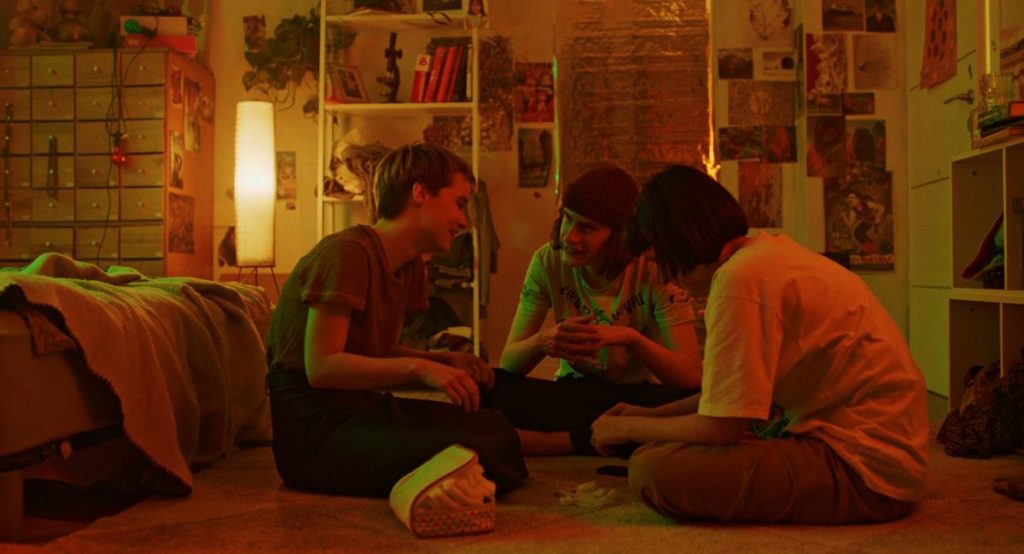
7R: There are interviews with the characters in Stop-Zemlia, where they seem to be talking to some documentary filmmaker after the action of the film. Where did that idea come from?
Kateryna Gornostai: It started with these interviews we did when we were casting. The interviews were my way to know them better for the first time. We did more than 250 interviews during the casting. For me, it was a really interesting stage of pre-production, because it was like seeing the whole world of the film before our eyes. I wanted to end the making of the film like it began: to make another interview with them afterwards. These interviews were done at the end of the shoot. It was another talk with them, but through the lens of their character, because they were answering their questions in character. The characters, in some way, are similar to the real people that you’ve seen in the film.
7R: Many of the characters in Stop-Zemlia have some mental health issues, whether that’s depression or self-harm. But it’s not depressing; it deals with these issues but doesn’t suggest that it’s the end of the world. How did you think about how to explore that?
Kateryna Gornostai: This came from my memories of being that age, because, as you mentioned, it’s not the end of the world. But everything that happens to you at that age is happening for the first time. Sometimes, this experience is so overwhelming that you don’t know how to deal with it. Even if it’s a relatively small problem, compared to the problems in the whole world. I wanted to make this film about these nothings that somehow really overwhelm you.
[The characters] have different ways to deal with it. Yana, the girl with the black hair, deals with [her depression] by going inside of herself. Masha cuts herself because she’s really sensitive to the world. It’s a really organic thing for that age.
A starting point for the film was to describe how teenagers go through really ordinary things that are painful for them. Because sometimes, even if nothing happens in your life, it’s really painful. I remember this a lot from my teenage years. While I was a teen, I loved American films about teenagers, and they had all kinds of drama in them. They were dealing with a lot of different things and there were all these events. It was really interesting, but I thought, “Why am I so boring? Nothing happens in my life! Everybody’s living life, and I’m sitting at home and preparing for exams. Or I’m drinking with my two friends, and that’s all I have in life.” So it was really interesting for me to not have external conflicts, but to have the conflict be inside of people and the ways to deal with that.
7R: Masha is at the center of this, but we sometimes go off and follow her crush, her friends, or some of the other kids at school. How did you think about how and whom to follow?
Kateryna Gornostai: This was the experiment for me. Initially, in the script, there were two main characters, like in the film: Masha and her crush, Sasha. I didn’t want them to have equal weight in the story, to have these two halves. It was a really interesting experiment for me to balance these two characters because I really wanted them to be different. Masha has good parents, good friends, and everything is good, but she feels bad. Sasha feels nothing. He’s dealing with this conflict with his mother, this classical drama between parents and kids, but he doesn’t know what to feel about it. So he’s blank, he’s not feeling anything.
For me, it was interesting to figure out how we would find a balance between these two characters. I really wanted them to tell their own stories, rather than having Masha be the perspective character throughout.
We had this nine-week laboratory with all twenty-five of the kids in the class. We danced a lot, and sang, did some exercises, documentary theatre, and some texts. We were working on some autobiographical stuff with them during this laboratory. After that, I started thinking that I really want all of them to be in the film more. So we started to make this universe where everybody should do something. This idea, that everybody should have at least one or two scenes in the movie, appeared. We started to make these kind of third and fourth storylines in the film where everybody has some kind of trajectory.
It was a lot of struggling in the editing, to balance everything afterwards, because there’s loads of material with all of them. And then, I thought it could be interesting to have spin-off stories with some of the other characters, too, because they’re really cool. And we wanted them all to be in the film and to have some time to express themselves and to speak for their characters.
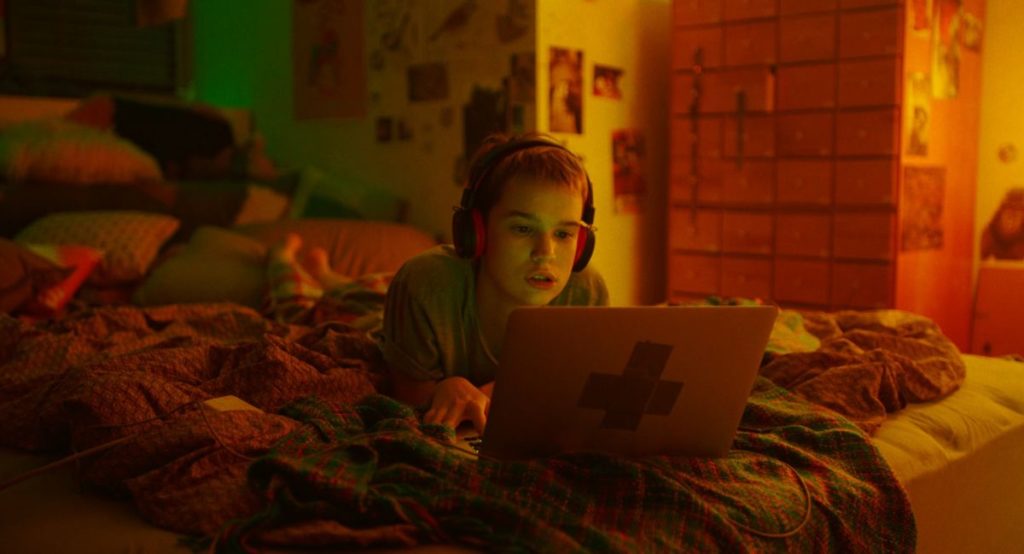
7R: Can you tell me a bit about the production design for Stop-Zemlia? I really loved the design of Masha’s bedroom, especially.
Kateryna Gornostai: This was my first real collaboration with a production designer, Maxym Nimenko. He’s great. We had a kind of a trio with him and our director of photography (DoP), Oleksandr Roshchyn. As the starting point, we decided that we wanted to control everything. So we were gathering together a lot.
We would go into schools — I don’t know how many, but a lot. We researched how schools looked. In Kyiv, we have schools from different times. We have schools built in the 1900s — more than a hundred years ago. We have schools that were designed during the Soviet Union, in the ’50s or ’60s, and ones in a different style from the ’70s and’ 80s. And we have schools that were designed once Ukraine became independent. Each of these periods has completely different architecture.
We picked everything, and designed the school from different parts of different schools. It’s not one school. We really wanted to pick a colour for the walls, for example. It was crucial for us to be able to repaint everything. It’s really interesting how schools pick the colours for themselves. I would say that it’s not really good for cinema. So we needed to repaint it, and then repaint it back for the school authorities. It was so, so painful because we really liked that colour, and it was better than the colour that they had. But they were like, “No, no, no, You should replace it with our colour that we had before.” So we repainted it again.
Then, Max and his production team started. They were brilliant. Maybe I’m talking about some of his secrets. The way we dealt with interiors was that we had a lot of stuff. We placed a lot of stuff in the room, and then picked things out. So we stuffed it all in, and then we cleaned it to some level. For Masha’s room, it was really important for us to have practical lights. We wanted this room to be available to shoot in 360 degrees. All the lights in the room are practicals. We tried to avoid big, artificial lights to be flexible and cozy without hard lights.
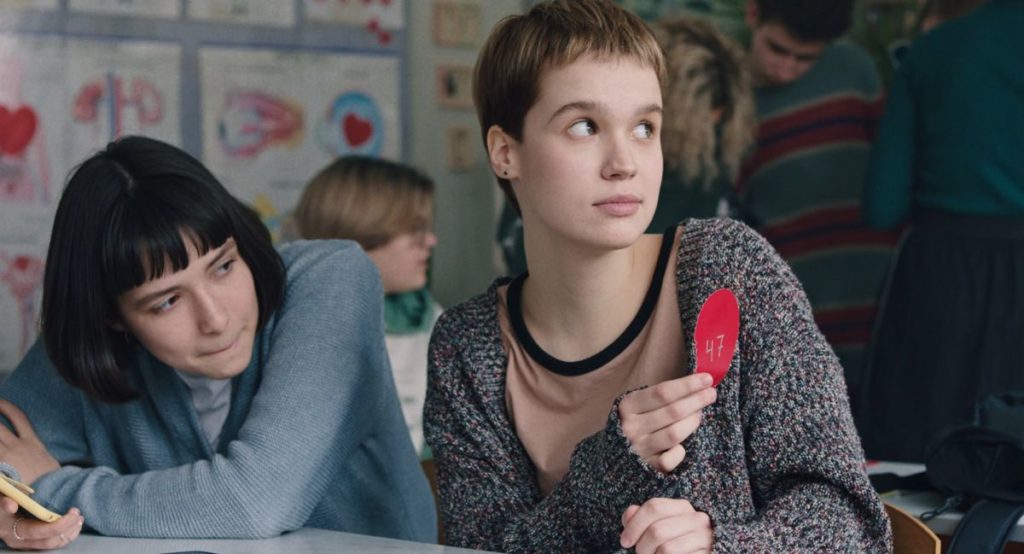
7R: Can you tell me about the costumes in Stop-Zemlia?
Kateryna Gornostai: This is my favourite part. Our costume designer is Alyona Gres, and she’s wonderful, as well. When we were preparing in this actors’ laboratory, she came to see the real people that would be actors in this film. And then she started to pick out some looks for them, which were really close to the way the real people dressed, but in a better way. She really understood the story so when we were shooting, she would propose, for example, three outfits for a character in the scene, and they were all good.
She has a daughter of the same age [as the characters in the film] so she knows how they dress now. She also has her own line of clothing. She’s really into youth fashion. She knows what they wear when they go to, for example, raves or discotheques or to school. She was in love with all the actors, as was all the crew, because they are cool kids, and everybody loved them a lot.
But it wasn’t easy because there are twenty-five of them. I don’t know how they managed to create a wardrobe for five script days in the film. Now, the film takes place over four days after the editing, but we had five [when we shot the film[. So she had to create at least five different outfits for twenty-five people, if not to mention that some days had multiple outfits. It was a lot of clothes, and they have the whole room stuffed with all of that.
7R: What was it like with the actors on set? Were they improvising on set? Or was everything, very nailed down and written?
Kateryna Gornostai: The script had a series of scenes written. If it’s a scene that contains a lot of actions, like the scene at school where Nina throws Dania’s backpack out the window, where it’s just an event, we discussed the trajectory of camera, and then they began doing it. They didn’t have any words written down. They knew the situation, but they improvised the dialogue. They know the beginning point and the end point, and the mood of the scene, but other things were improvised.
When we have scenes with a lot of dialogue, it was a different process. I didn’t want to put the words inside their mouths. Because of that, they had a brief text explaining what they are talking about, and then we would rehearse the dialogue. I had a script that was fully written, but didn’t show it to them. I would pick ideas for them from the script, and I had some possible dialogue written down. So the specific dialogue was on their shoulders, but the topics, the trajectories of the scene, and the mood was scripted.
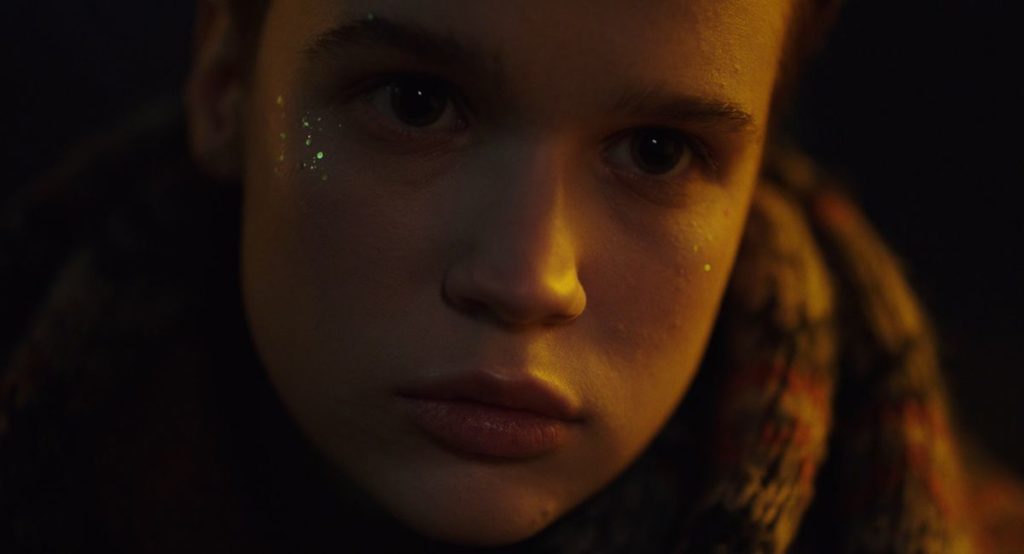
7R: Can you tell me about the nine-week laboratory you held before the shoot for Stop-Zemlia?
Kateryna Gornostai: At the nine-week lab, we decided not to speak about the script at all. They didn’t know the story, actually. We were looking for a whole class to be placed in the film. We gathered these twenty-five people as a whole class and did a sort of actors’ laboratory. They had classes in dancing, movement, or singing. They worked with a singing teacher to learn how to use their voice. They were screaming, and opening up their voices. Other tutors were dealing with actor workshops. We were doing some theatrical practices with them, for example, like exercises where they wouldn’t use words.
My partner, Nikon Romanchenko (who also edited the film), and I knew the script, and he was working with me from the beginning. He was at the laboratory, too. We would switch the pairs or triplets of actors doing different tasks, just to see what the chemistry was like between different people in these small groups. One of the tasks in a triplet was they needed to go somewhere — they would blindly draw a place to visit — and write down everything that would happen if they were there and words they would be saying. And then, they should present a documentary play about this.
After the laboratory ended, we met with each of them one more time, privately. At that point, I gave them their roles from the script. It was the first time they actually saw the text. After that, it was the end of the laboratory and the beginning of the preparation of the film. At that point, we just started shooting because they were already really close to each other.
The third thing that was really important was that they knew how we work, who we are, and how we resolve things. We wanted them to know what films we like, so they understood everything. The most important thing for me during this laboratory was for them to be friends. Now, they’re really close to each other and friends. I wanted the psychological tension to be low.
During the laboratory, we shot every moment. We had a camera with us and we filmed everything, every day. We needed them to be okay with having the camera there. So when we got to the shoot, it was easy for me because we were really close, and we knew how to do it. Sometimes, when I would say something to some actor, for example, their answer was like, “I know!! What are you talking about? I know how to do it.” So they were aware of it. They are brilliant actually.
It was really hard for me and our DoP because we didn’t realize that for the group scenes with everybody in the frame, it is really difficult to show the situation from different angles, to repeat it mostly the same. And it’s really hard to frame them, actually, when there are a lot of them in the frame. While we were shooting, I was thinking that, “Oh, I should write something really intimate for two people next time — not for the whole class!” because it’s so tough.
7R: Was it just because it’s tough to shoot something with a lot of different characters? Or was it because they weren’t doing the same thing in multiple takes?
Kateryna Gornostai: It was tough to compose the frame. We needed to edit it on the set, in my mind. I was thinking a lot on set, “What else we need [for this scene] so we can edit it the right way?” It was so hard because we had no time to actually edit it. So I needed to edit it mentally.
We ran each scene from the beginning to the end each time. For me, it was hard to be aware of what we’re going to need in the editing room just to piece it together. Because of the film’s realism, if there’s one piece of dialogue that sounds not real when it’s spoken, it ruins everything. If we have some small detail that is not right, it ruins everything. All the details need to be pretty okay or else the whole thing won’t look real.
7R: What was the editing process like for Stop-Zemlia?
Kateryna Gornostai: It was tough, more tough than I thought it would be. Production was really stressful for me, because I’m a first-time director. I thought I would be sitting at home and editing with Nikon, and it would be so pleasant and so calm. But it wasn’t. Suddenly, I realized all the responsibility I have with this huge amount of material. It was so tough to deal with this responsibility while editing it. We were struggling a lot. But it was an interesting process.
We edited it like a documentary film, mostly. We looked through all the material and picked the best of the material. Then, we made the scenes, and then we placed them in the order they were scripted. And then, we started the creative process. It took a long time to just look through everything and to make the scenes work. And then, we started to switch the order of the scenes and to find this balance between these two characters [Masha and Sasha], and then between the fictional story and these documentary-looking interviews. The material is different in these two parts, so we needed to find the right balance. There were also these dream-like sequences that Masha has, which we had to balance.
In the last steps of editing the film, we were really exhausted. At that point, it was hard to see the changes that we were doing in the editing. So we had a consultant, Marta Andreu. She was really helpful for us — just to see the whole film in the final stages and to talk about it with us like a psychotherapist. She’s brilliant. And then, we locked it.
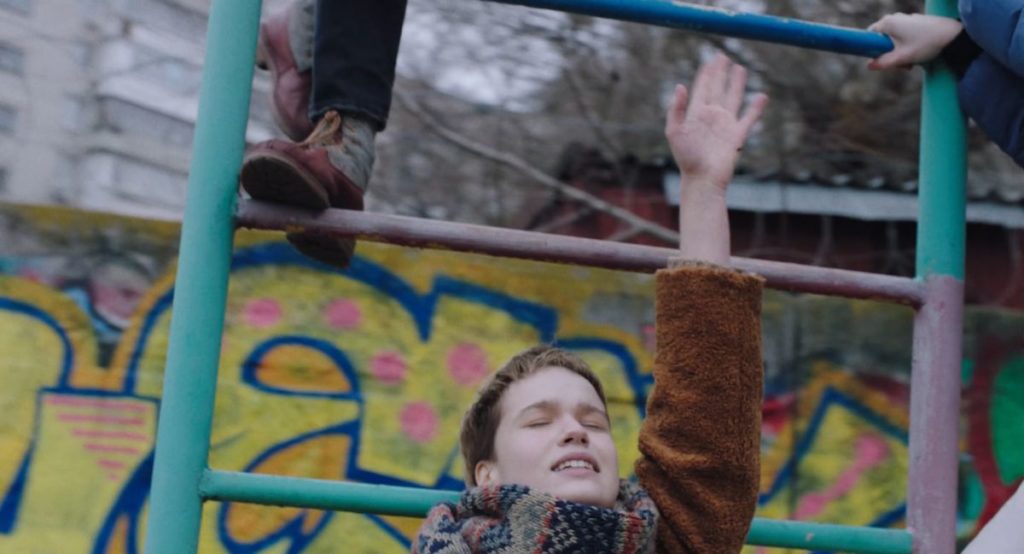
7R: Can you tell me about the title, Stop-Zemlia?
Kateryna Gornostai: This is the name of a game in Slavic languages that I played while I was a kid. Someone is blindfolded, and everybody in your group hides somewhere. If you hear that somebody is walking on the ground, or moving to some other parts of the playground, you can shout, “Stop-zemlia!” It means “stop the planet.” And if this person is on the ground, this person becomes “it”, wearing the blindfold. The other way to catch somebody, actually, is to physically catch them, and you need to name the person. You need to know who you are catching. This is the really simple game that they’re playing in the film.
I really like this game as a metaphor. The game is about a frozen moment. It’s like life is catching you on the ground. They’re young adults, actually, not kids anymore, but they’re really cheerful and joyful as kids, and they remember how to be kids, too.
We couldn’t find a good English title for the film so we stayed with Stop-Zemlia, the translated version of the title. Because “stop the planet!” would be a strange thing to name the film in the context of the pandemic, and I didn’t want that connotation. So we went with our Ukrainian title translated.
You could be missing out on opportunities to watch great films Stop-Zemlia at virtual cinemas, VOD, and festivals.
Subscribe to the Seventh Row newsletter to stay in the know.
Subscribers to our newsletter get an email every Friday which details great new streaming options in Canada, the US, and the UK.
Click here to subscribe to the Seventh Row newsletter.
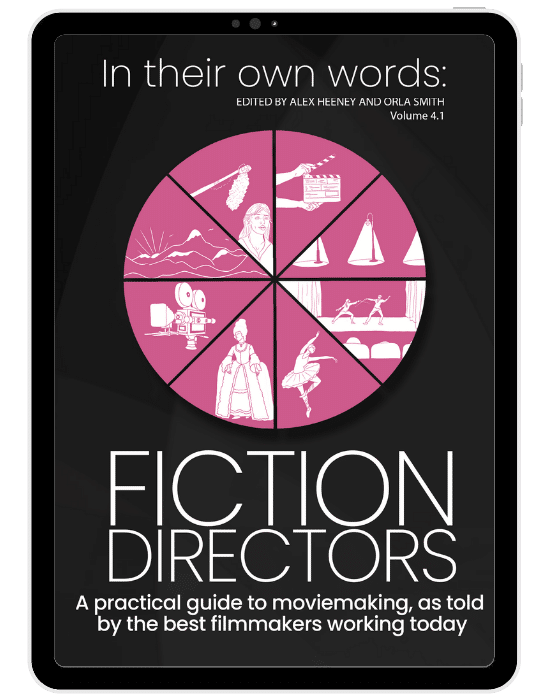
Discover how the best filmmakers working today approach filmmaking
A practical guide to moviemaking, as told by the best filmmakers working today.

